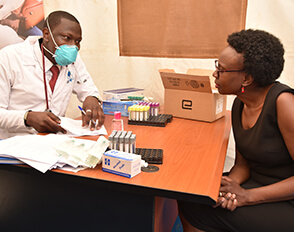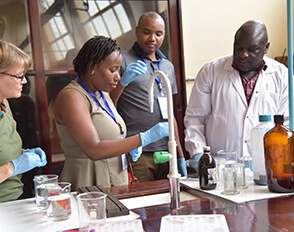
IDI Supports TB Services in Karamoja Region
It is estimated that 5 of every 10 TB patients in the Karamoja region completes treatment successfully and only 3 of 10 get cured. This region of 9 districts and an estimated population of 1.2million was declared by the Ministry of Health as having one of the highest TB burdens in Uganda.
“I have not seen TB this bad anywhere else in Uganda. I am sure Mulago Hospital has as bad a burden, only because it is the national referral hospital,” Dr Paul Kisseka, the deputy medical superintendent at Matany Hospital in Napak District said.
Dr Andrew Mukuye, the Senior Technical Advisor at the USAID-IDI PACT Karamoja project visited Matany Hospital in Napak district yesterday with a team of 4 project staff. The visit was intended to work with hospital staff to bridge gaps around TB case finding, patient retention, follow up and TB preventive therapy initiation and completion. The goal of the project is to scale-up evidence-based high-impact interventions towards the achievement of the End TB strategy which targets of 90% treatment coverage and treatment success.
Dr Mary Mudiope, the project chief of the party also attended a two-day a health quarterly performance review meeting in Karenga District 270km from the project office in Moroto District. During the meeting, she encouraged the health centre workers present to adopt differentiated TB service delivery models including targeted interventions to hotspots and key populations in the communities.
She handed over TB screening stamps, laptops and MIFIs to facility representatives present. The TB screening stamps and phones will facilitate health workers to identify TB patients early and follow them up while on treatment. The district TB supervisors and the regional TB Focal person were provided with laptops and MIFIs routers to facilitate TB data utilization at district and regional levels as well as timely communication.
By Tracy Ahumuza






